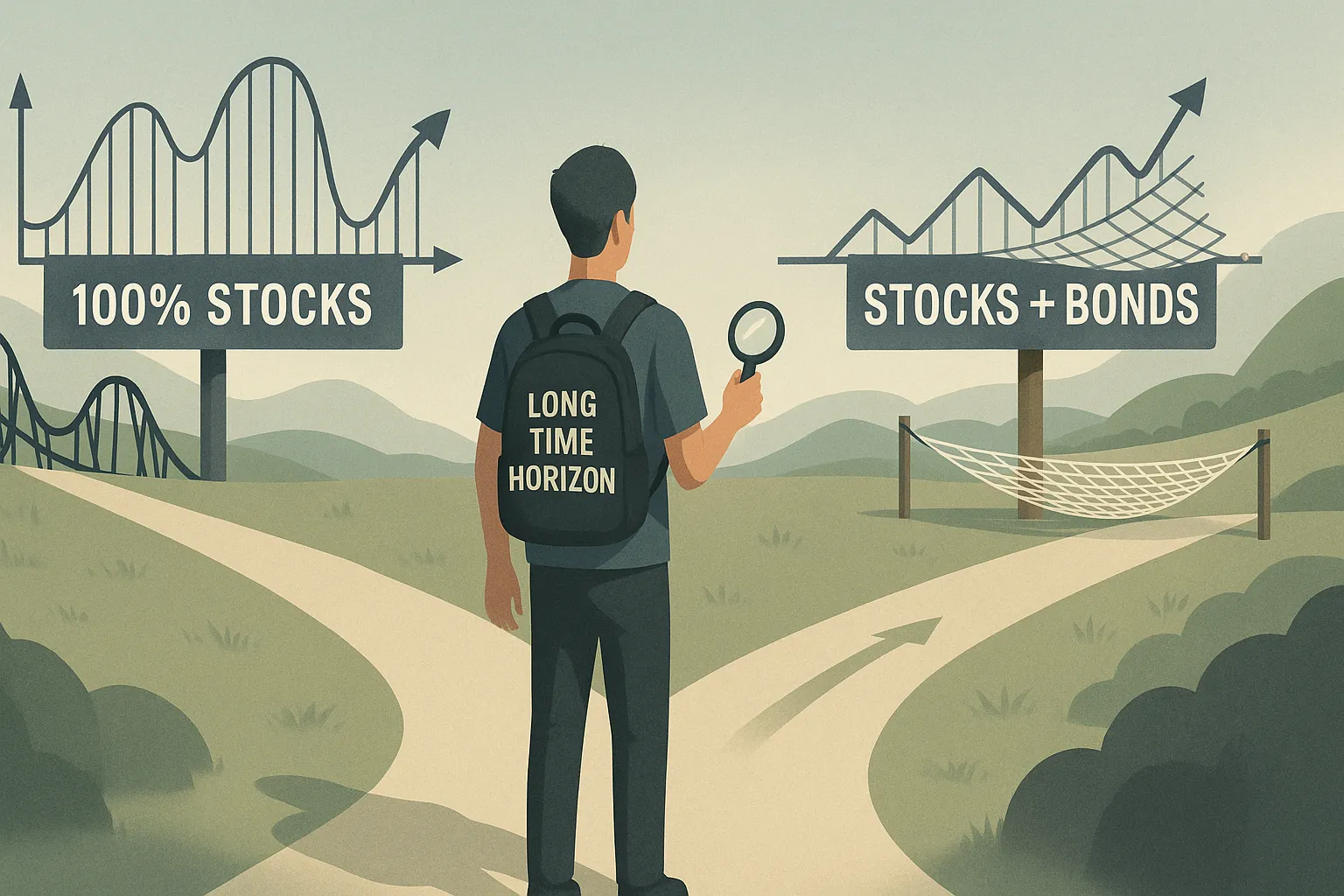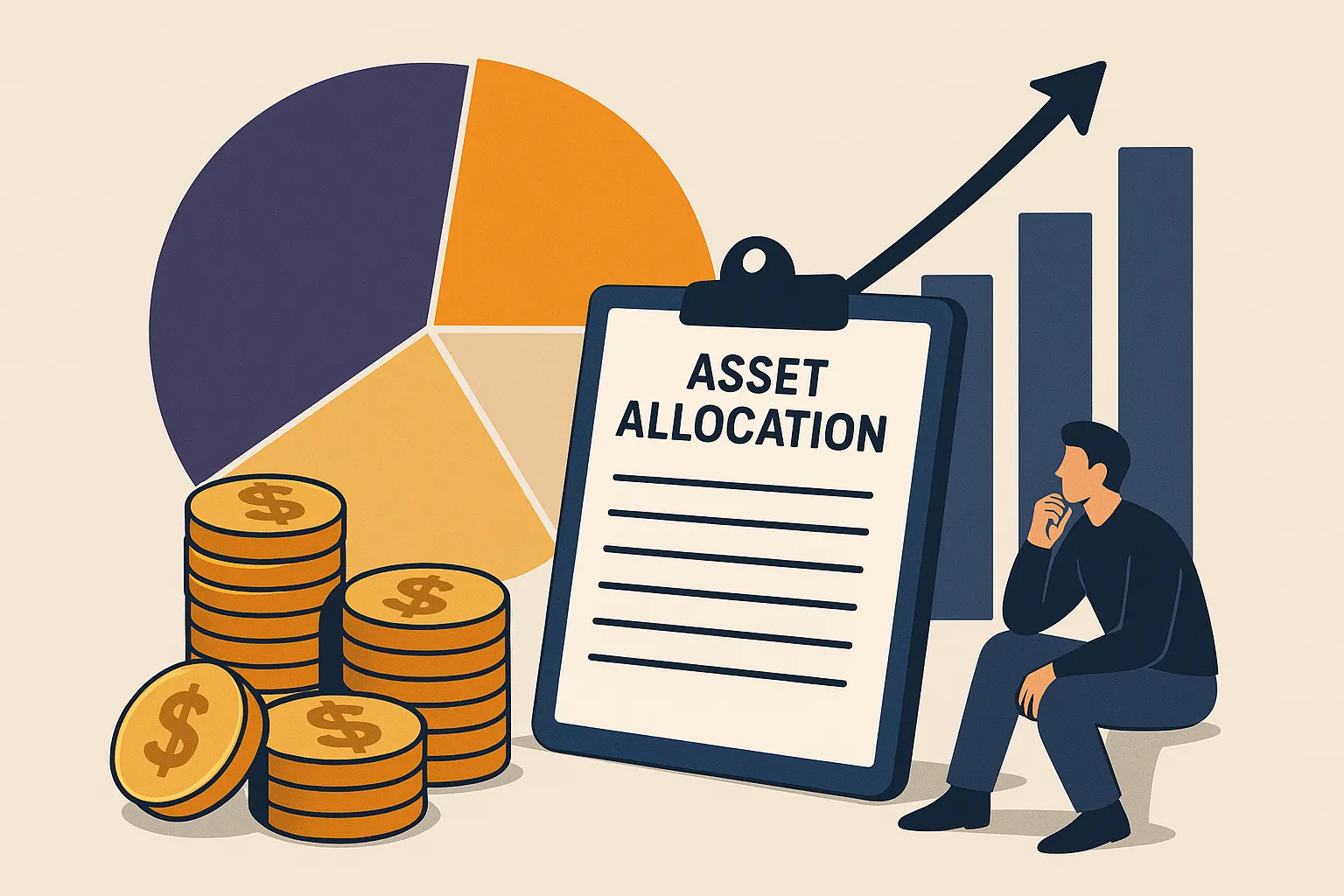Should Young Investors Skip Bonds Altogether?

Over the 37-year period from 1987 through 2023, a 100% U.S. equity portfolio (Vanguard Total Stock Market Index) delivered a 10.62% annualized return, versus 8.74% for a 60% equity/40% bond portfolio. That statistic fuels the belief that young investors—who often have decades until retirement—can afford to go all-in on equities. But is it really that simple?
Many people assume that the only reason to hold bonds is income in retirement. In that framing, bonds seem irrelevant to anyone under 40. But this article explains why the decision is more nuanced—and what trade-offs exist in skipping fixed income entirely.
Key Takeaways
- Long time horizons increase the appeal of stocks—but also require the stomach for deeper drawdowns.
- Bonds historically lower portfolio volatility, which can help prevent panic selling during market crashes.
- Avoiding bonds can improve long-term returns, but also creates sharper swings in portfolio value.
- Some investors may benefit from a small bond allocation as a behavioral safety valve—even in early career years.
Why Skipping Bonds Appeals to Young Investors
At first glance, the case for going all-equity seems obvious. Stocks have historically delivered higher returns than bonds over nearly every multi-decade period. When retirement is 30+ years away, compounding equity gains can have a massive impact on future wealth.
- Since 1926, U.S. large-cap stocks have delivered an average annualized total return of 9.81%.
- Over that span, long-term government bonds have returned an average of 5.42% per year.
That gap compounds quickly. A person investing $10,000 annually for 30 years at a 10% return ends up with over $1.8 million. At 5%, it’s just under $700,000. This stark difference explains why some young investors see bonds as a drag.
However, this assumes the investor stays invested through every downturn—and that’s where the theory starts to diverge from reality.
The Real Role of Bonds: Behavior, Not Just Math
Bonds aren’t just about yield. They also serve a psychological role. During periods of stock market stress, bonds have often held steady or even gained, providing ballast that helps keep investors grounded.
- Hypothetical: Imagine a 28-year-old investor who puts all savings into equities right before a sudden 40% market decline. If that person panics and sells at the bottom, the theoretical advantage of an all-stock portfolio vanishes.
This is where bonds may help—even if they reduce returns slightly:
- They provide short-term stability, which can reduce the urge to sell during a crash.
- They can be tapped for liquidity without selling stocks at a loss.
Behavioral finance studies consistently show that many investors panic-sell during market drops. Bonds, by dampening portfolio swings, can be a safeguard against emotion-driven decisions.
What 2022 Revealed: Correlation Isn’t Constant
During the 2022 Fed tightening cycle, both stocks and bonds posted losses in the same year—the first time in decades. In 2022, the Bloomberg U.S. Aggregate Bond Index plunged 13%—its worst calendar year since inception in 1976—as stocks also declined amid recession fears and rising rates.
This rare overlap raised a question: if bonds don’t always provide protection, do they still belong in portfolios at all?
The answer is that correlations shift based on macro conditions. In inflationary environments, both assets may fall. But historically, such periods are the exception, not the rule. Over time, bonds have delivered diversification benefits in most downturns.
That said, young investors with higher risk tolerance might reasonably decide that short-term bond performance isn’t enough to justify their inclusion—especially when interest rates are low or rising.
When (and Why) Young Investors Might Still Use Bonds
For some early-career investors, the choice isn’t binary. Holding 5–15% in bonds doesn’t eliminate equity growth—it adds a layer of stability. This modest bond allocation may help in specific situations:
- Short-term goals: Saving for a home in 5 years? A small bond buffer can reduce volatility.
- Behavioral coaching: Nervous about volatility? Bonds can provide peace of mind.
- Rebalancing flexibility: Bonds can be a source of dry powder to buy stocks during dips.
What matters most is not the theoretical return—but sticking with the plan. Even a slight reduction in equity exposure may help some investors avoid emotionally charged decisions.
So what? A strategy that’s “optimal” on paper only works if it’s sustainable in real life.
- Behavioral Insight: Risk tolerance often drops during real losses—not hypothetical ones. For young investors, skipping bonds entirely may work—but only if they’ve proven they can handle large market swings without reacting emotionally.
How optimized is your portfolio?
PortfolioPilot is used by over 30,000 individuals in the US & Canada to analyze their portfolios of over $30 billion1. Discover your portfolio score now:






